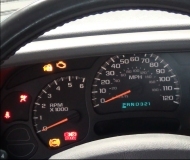Welcome to 2CarPros.
We need to start at the beginning because there are a few different things that can cause this.
First, I need you to check for diagnostic trouble codes.
Here is a link that explains how to get them on a Toyota OBD1 system. No special tools are required other than a small jumper wire or even a paper clip.
https://www.2carpros.com/articles/toyota-trouble-code-definitions-and-code-gathering-method-1990-1995
____________________________
Once you do that, let me know what codes are found.
Next, based on your description, I question if there is a fuel pressure regulator issue, fuel pump issue, or even a partially plugged catalytic converter. Take a look through these links and inspect these things.
https://www.2carpros.com/articles/bad-catalytic-converter-symptoms
https://www.2carpros.com/articles/how-to-test-a-catalytic-converter
https://www.2carpros.com/articles/how-to-check-fuel-system-pressure-and-regulator
_______________________________
Here are the directions for testing fuel pressure specific to your vehicle. The attached pictures correlate with these directions.
FUEL PRESSURE TEST
SET-UP
1. Check that the battery voltage is above 12 volts.
2. Disconnect negative (-) terminal cable from of the battery.
pic 1
3. Disconnect the wiring connector from the cold start injector.
4. Put a suitable container or shop towel under the cold start injector pipe.
pic 2
5. Slowly loosen the union bolts of the cold start injector pipe and remove the bolts, cold start injector pipe and 4 gaskets.
6. Drain the fuel from the delivery pipe.
pic 3
7. Install a gasket, fuel pressure gauge, another gasket and union bolt to the delivery pipe (fuel rail) as shown in the illustration. (SST 09268-45012)
8. Wipe off any splattered gasoline.
9. Reconnect the negative (-) terminal cable to the battery.
CHECK FUEL PRESSURE
pic 4
1. Using jumper, connect terminals FP and +B of the DLC1. (SST 09843-18020)
2. Turn the ignition switch ON.
pic 5
3. Measure the fuel pressure.
Fuel pressure: 265 - 304 kPa (38 - 44 psi)
If high. replace the pressure regulator.
If low, check the following parts:
Fuel hoses and connections
Fuel pump
Fuel filter
Pressure regulator
4. Remove SST from the DLC1.
5. Start the engine.
pic 6
6. Disconnect the vacuum hose from the pressure regulator and plug it closed.
7. Measure the fuel pressure at idling.
Fuel pressure: 265 - 304 kPa (38 - 44 psi)
pic 7
8. Reconnect the vacuum hose to the pressure regulator.
9. Measure the fuel pressure at idling.
Fuel pressure: 226 - 265 kPa (33 - 37 psi)
If not within the specified pressure, check the vacuum hose and pressure regulator.
10. Stop the engine. Check that the fuel pressure remains above 147 kPa (21 psi) for 5 minutes after the engine is turned off.
If not within the specification, check the fuel pump. pressure regulator and/or injectors.
11. After checking fuel pressure. disconnect the battery ground strap and carefully remove the fuel pressure gauge to prevent gasoline from splashing.
12. Using new gaskets. reconnect the cold start injector pipe to the delivery pipe and cold start injector.
13. Connect the wiring connector to the cold start injector.
14. Start the engine and check for fuel leakage.
_______________________________
Check these things and let me know what you find.
Take care,
Joe
Images (Click to make bigger)
Thursday, May 16th, 2019 AT 6:58 PM
















